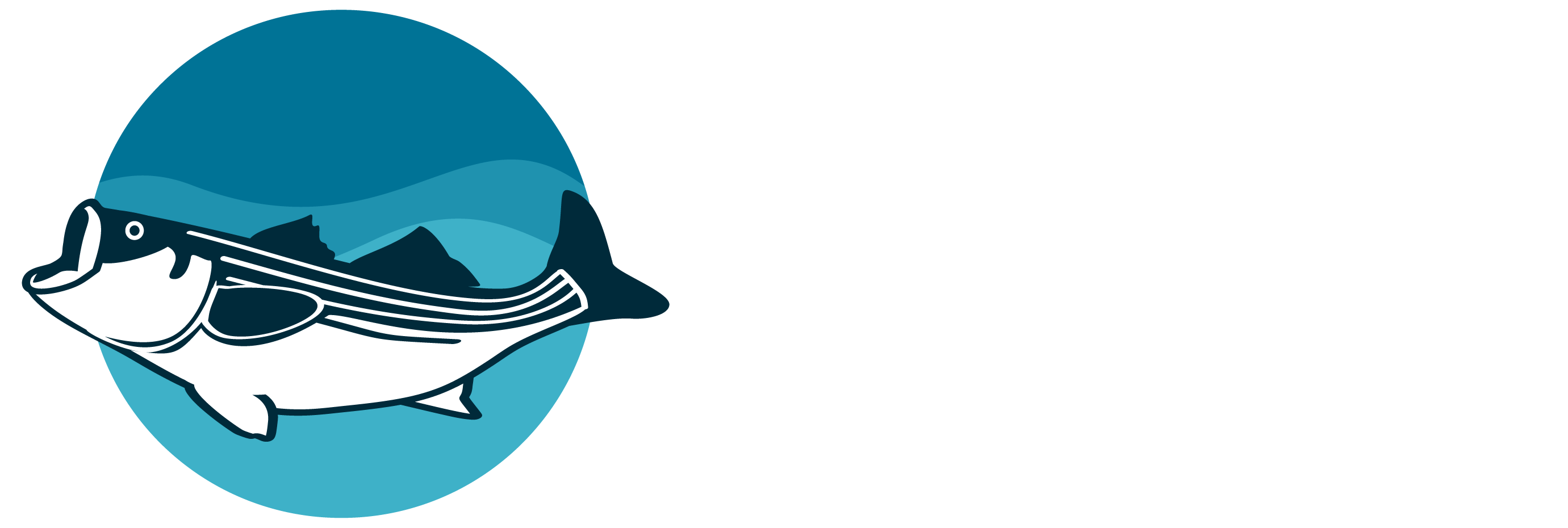Secret Lives and Surprising Science!
One major goal of the striped bass initiative is to provide a forum for students to ask questions, to develop hypotheses, and to devise ways to test the hypotheses. More information about research projects conducted at the MBL can be found at stripedbassmagic.org under the header Surprising Science.
Since 2015, more than 250 individuals have been introduced to the science behind the Striped Bass Magic initiative. Students follow the bass as they migrate more than 1,000 miles round-trip and learn how the animals interact with other organisms in their ecosystem, the technology used to research marine life, and how human activity affects the striped bass and their food web.
Classroom material developed by students and teachers as well as lesson plan links are available in the Curriculum section of the site. A number of examples of student and teacher involvement in the striped bass initiative at the Marine Biological Laboratory are listed below. More information can be found at stripedbassmagic.org.
Join us in the striped bass adventure!
If interested please contact Scott Bennett ([email protected]).
Please consider donating to this outreach initiative so that it can continue and grow.

From left: Mikayla Higgins, Alanna Hughen, Hannah Birmingham
1. Student Participation in Research During the Summer
Striped bass have seven to eight stripes that extend down their bodies. Aberrations in one or more of these stripes can be used to identify individual fish. Many students have taken pictures of these aberrations to see if fish can be identified from year to year in Eel Pond. In addition, control studies have been conducted to make sure that the aberrations do not change over time.
In 2022, Alanna Hughen and Hannah Birmingham were able to compare fish pictures taken when fish were tagged in fall 2021 with pictures they took of the same fish the following summer. They were able to identify individual fish by their aberrations indicating that the aberrations did not change year-over-year. This research will be combined with findings of former students Jolie Ganzell and Andrea Díaz-Pacheco and is being prepared for publication. Alanna will be attending the University of California, Santa Cruz and Hannah will be attending the University of Connecticut.
Mikayla Higgins analyzed data on the position of striped bass in Eel Pond. She also wrote a commentary on the apparent contradiction between the overfished status of striped bass and the apparent abundance of striped bass caught by fishers along the Elizabeth Islands during the summer of 2022.
2. Continued research: Acoustic Tagging Initiative
During the summer 2022, position of tagged fish was monitored in Eel Pond. Six receivers were placed around Eel Pond to allow detection of the fourteen fish, tagged in fall 2021, that returned to Eel Pond in 2022. The receiver array allowed determination of fish position by comparing the time taken for a transmitter signal to arrive at different receivers. We were able to obtain the position for each tagged fish every 2-10 minutes for the summer months. The results are currently being analyzed.
Acknowledgments
Funding for this project is provided by the Edwin Barbey Charitable Trust.


Recent Comments